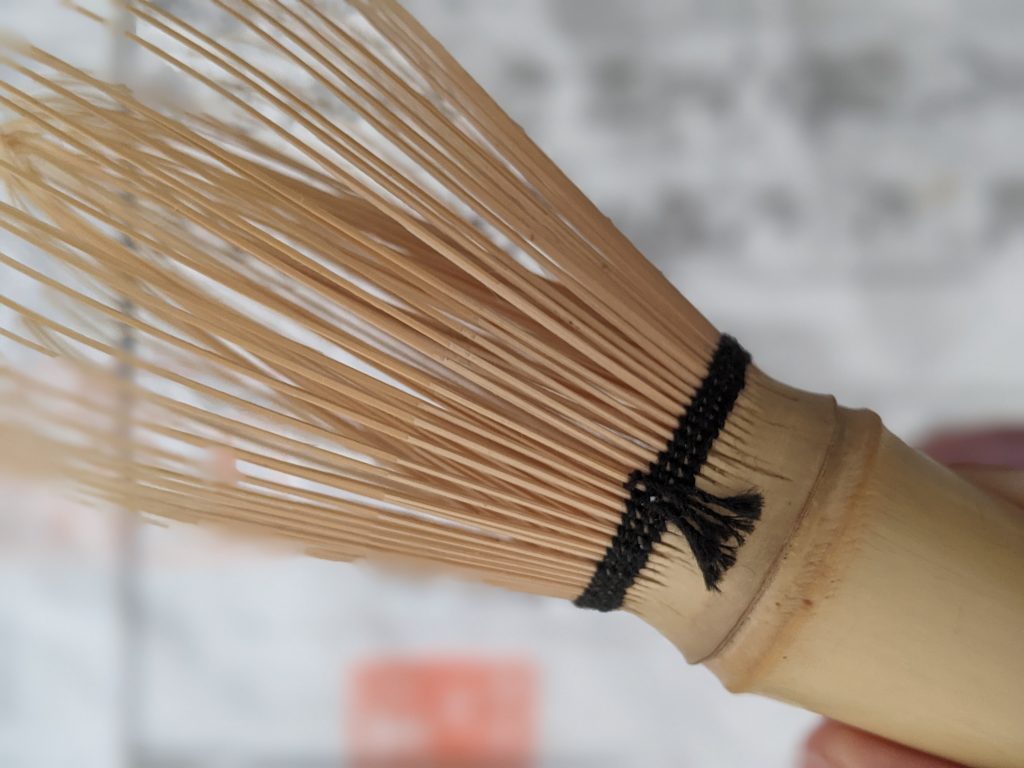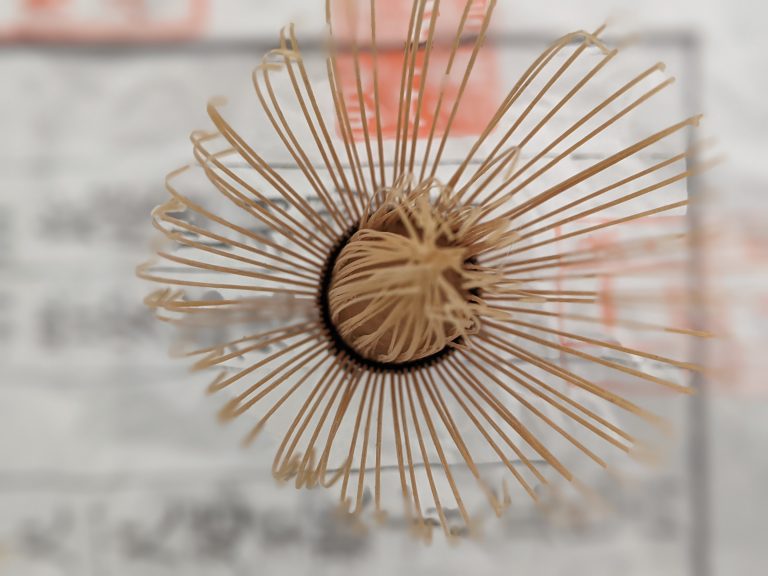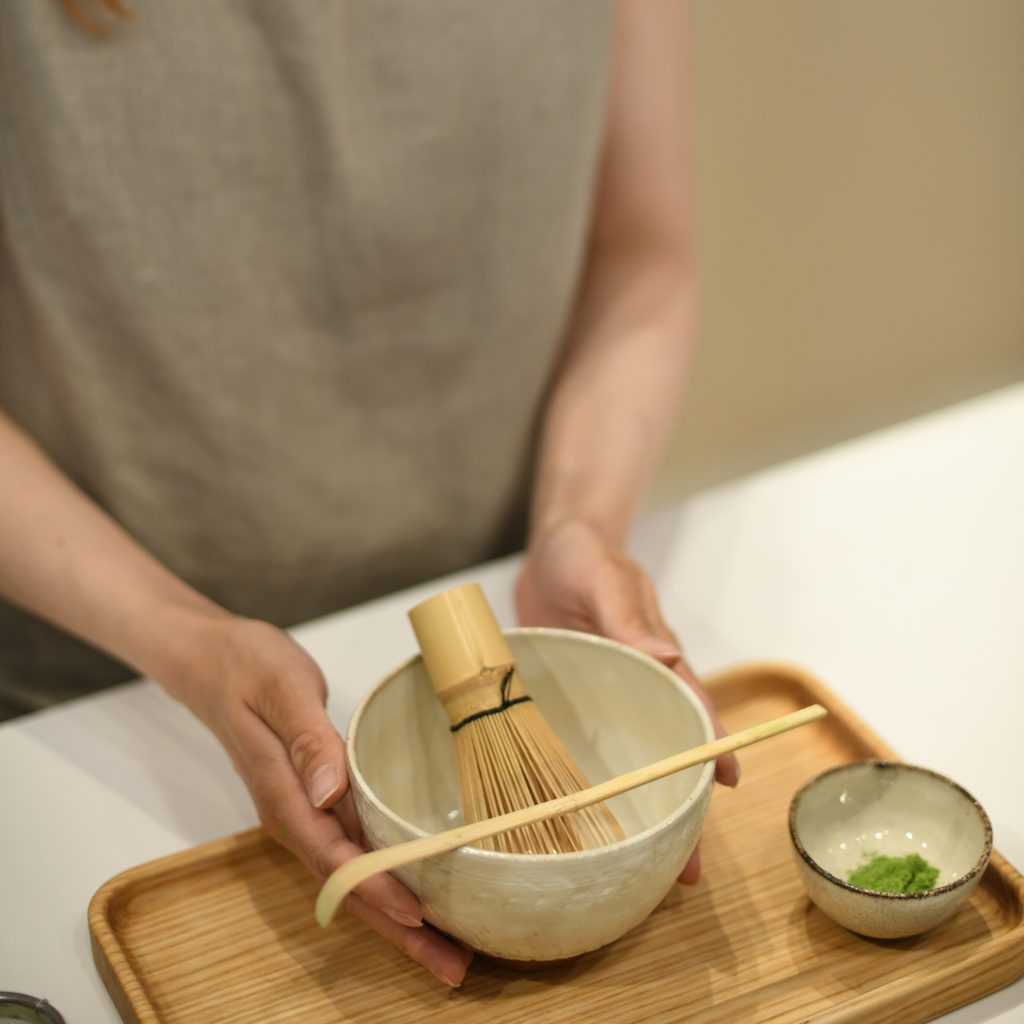Ema Kazlauskaitė
Author of the text
The first Japanese matcha whisk, the chasen, is believed to have been created during the Muromachi period, around 500-600 years ago. Murata Joko is credited as the inventor of the whisk. Murata Yuko gave one of the first brooms to the then Emperor. He was impressed by the beauty and craftsmanship of the whisk and gave it the name “Takaho”. Over time, the Takaho Chasen became known as the Takayama Chasen, and these days the matcha whisk is simply called a chasen.
There are several types of matcha whisks, so a common question for beginners is how to choose the right whisk, what are the differences and which one is the best?
Why choose a matcha whisk?
Matcha whisks are usually made from bamboo. This whisk is used to whisk the tea to the perfect consistency to reveal its true flavour. Using a blender or other means makes it difficult to achieve such a result, as the tea may jump in clumps and the taste and appearance may change.
There are 4 main principles associated with the preparation of matcha tea: respect, harmony, purity and calm. These principles are difficult to reconcile with modern technology, so using a metal or electric blender will not only fail to achieve the desired result, but will also miss out on the true enjoyment of Japanese culture and tea making.
What to look out for when buying a whisk?
With the growing popularity of matcha, there are more and more substitutes and cheap alternatives to matcha whisks, but they are usually not of high quality and durability. When choosing a whisk, it is important to understand that they are all very different. Matcha whisks made in Japan are of higher quality because the artisans pay attention to even the smallest details. It all starts with choosing the right bamboo. Great attention is paid to every detail to ensure that everything is perfect, symmetrical, aesthetically pleasing and thus long-lasting.
1. Name of manufacturer
Quality is often guaranteed by the name of the manufacturer. Japan has a small number of generations of families who have been practising chasen for generations. For example, the Yugen Tea collection by master Kubo Samon’s workshop whisk is marked with special stickers. However, caution should be exercised, as the industry is very much in the business of chasen made in China, but similarly labelled to the Japanese chasen.
2. Bamboo quality
Bamboo – the cornerstone of the matcha whisk. This tree can be cut into numerous splinters which allow to combine the fine matcha powder with water. Bamboo is strong, elastic and difficult to break, which allows for efficient whisking of the matcha powder. Bamboo The quality of the bamboo has a significant impact on the durability of the whisk. Japanese artisans choose their bamboo with great care, resulting in high quality and long-lasting whisks.

3. Number of tines
Matcha whisks can be made up of between 16 and 120 tines. The higher the number, the easier it is to whisk the tea powder. 16-48 tine whisks are classified as koicha. This type of matcha has a thicker consistency and does not require much whisking. The 64-tine whisk is used for koicha and usucha teas. 68-120 tines whisks are used for usucha (the usual for us) Usucha requires good whisking, so a higher number of tines ensures evenly mixed matcha.

How do I clean a matcha whisk?
The delicate design of the whisk may make it seem difficult to maintain, but this is not the case. The chasen needs to be “woken up” before use. Add hot water to a matcha bowl and whisk for about one minute. If you don’t use the whisk every day, leave it in hot water for about 5 minutes. After use, clean the whisk by whisking it in hot water until it is clean. Leave the whisk to dry naturally, do not put it in a sealed box.
It is important to remember that the whisk cannot be washed in the dishwasher or with dishwashing liquid. This could harm it.
How do I store the whisk correctly?
Proper storage of the whisk is one of the most important steps that must be taken to ensure the longevity of the whisk. A properly used and maintained whisk can last for years, depending on its quality and frequency of use. When your tines start to break or lose their shape, it means it’s time for a new whisk.
- Never hold the whisk with the tines facing downwards and do not allow the tines to come into contact with the surface on which it is placed.
- Use chasen-tate (whisk holder). It will help you to hold the whisk correctly so it lasts longer. However, if you don’t have a holder, hold the whisk with the tines facing upwards.
- When your tines start to break or lose their shape, it means it’s time for a new whisk.
Do you have questions? Contact us – info@yugentea.lt!

